Iran has developed a robust drone industry after decades of importing defense equipment for domestic use by both security and military forces. By early 2024, Tehran had also exported drones or drone technology to at least five countries on four continents as well as to at least seven proxy militias in the Middle East. “When images of Iranian drones were published a few years ago, they would say they’re photoshopped,” Supreme Leader Ayatollah Ali Khamenei said on Oct. 19, 2022. “Now they say Iranian drones are dangerous, why do you sell them or give them to so-and-so?”
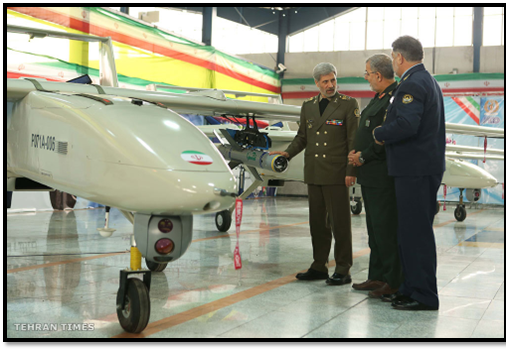
Iran fielded the largest arsenal of drones and missiles in the Middle East, the U.S. Defense Intelligence Agency (DIA) reported in 2022. It increasingly relied on drones to diversify its air power and aid proxies. “They are inexpensive, versatile, and Iran probably believes they sometimes allow for plausible deniability,” Lieutenant General Scott Berrier, the DIA director, told the Senate Armed Services Committee. Iran focused on improving “accuracy, lethality, and over-the-horizon capabilities,” he added.
Iran’s production of unmanned aerial vehicles (UAVs) came of age during the mid- to late-1990s, although the first uses abroad were not detected until the early 2000s, Farzin Nadimi, a fellow at The Washington Institute, told The Iran Primer. By 2022, Iran’s drones had altered the strategic balance—to varying degrees—in war zones in Europe, Africa and Asia. “They have made considerable impact on any battlefield they have appeared in,” said Nadimi, an arms expert.
Iran’s largest exports were long-range Shahed-136 suicide drones and shorter-range Mohajer-6 attack drones provided to Russia, beginning in August 2022, for use in Ukraine. In other war zones, Iran sold drones to Ethiopia in 2021 for use against Tigrayan rebels. It launched a clandestine operation in 2014 to provide Yemen’s Houthi rebels with unassembled drones, drone components, and know-how for use against a Saudi-led coalition, Nadimi said. As early as 2008, Sudan deployed Iran’s Ababil-3 against the Sudan People’s Liberation Movement and other rebels in Darfur.
Iran has also provided the technology for allies to produce drones locally. In May 2022, Tajikistan opened a factory to produce Iran’s Ababil-2 reconnaissance and attack drones. Around 2010, Venezuela started assembling Mohajer-2 surveillance drones. By 2021, Iran and its allies were assembling drones in Syria.
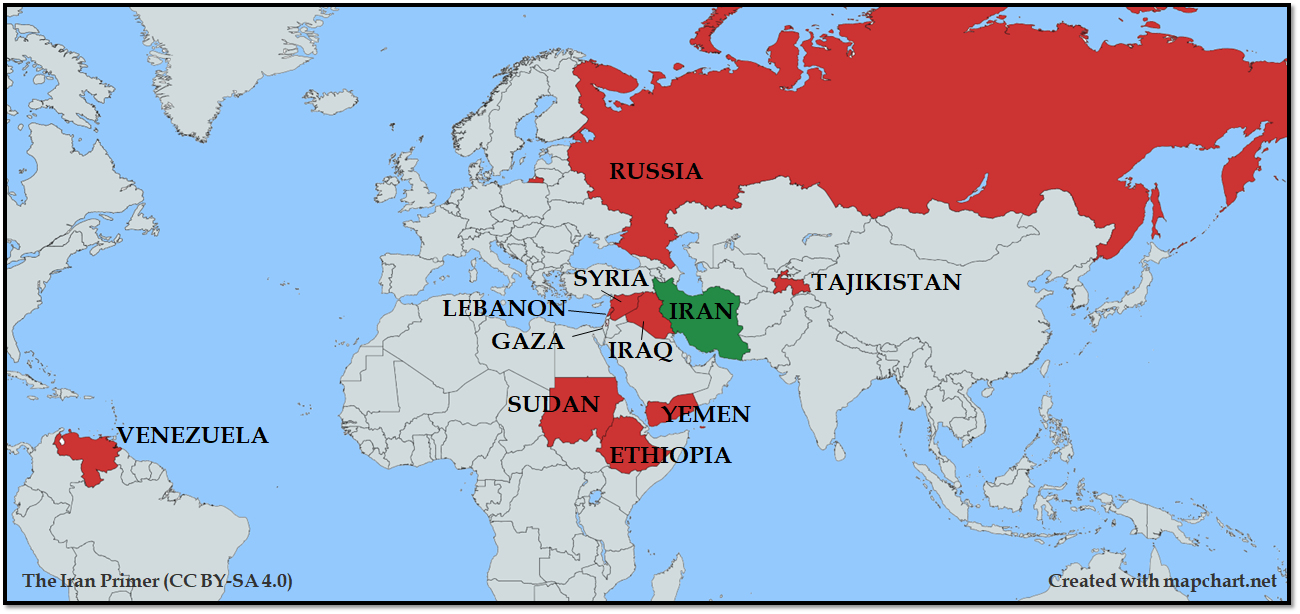
By 2022, Iran had been approached by more than 20 countries – including Algeria, Armenia and Serbia – about acquiring drone technology, Major General Yahya Rahim Safavi, a former Revolutionary Guard commander appointed senior advisor to the Supreme Leader, claimed on October 18. Iran has also exported drones or drone technology to proxies—including Lebanon’s Hezbollah, Kataib Hezbollah and other Hashd al Shaabi militias in Iraq, the Houthis in Yemen, and Hamas in Gaza—since 2004. “A new era has begun,” Safavi boasted. “We are now witnessing great changes in new technology, wealth, power and global order.”
In February 2023, Israel warned that Iran was in talks to sell “advanced weapons, including UAVs [drones] and PGMs [precision-guided missiles], to no less than 50 different countries,” said Israeli Defense Minister Yoav Gallant. “Iran is no longer a ‘local supplier,’ serving proxies in the Middle East. It is a ‘multinational corporation,’ a global exporter of advanced weapons.” He added that Tehran had exported drones with ranges of up to 1,000 kilometers to various countries, inlcuding Belarus in Eastern Europe and Venezuela in South America.
Export quantities have varied—from a handful of drones sent to Sudan and Ethiopia to hundreds provided to Russia, Hezbollah and the Houthis, Nadimi said. Countries and non-state actors sought Iranian drone technology because “there may well have been few available alternatives,” Douglas Barrie, a senior fellow at the International Institute for Strategic Studies, told The Iran Primer.
Unlike Iran, Israel and Turkey – the other major drone exporters in the Middle East – do not face international sanctions. Both can import high quality components and electronics for drones, while Iran must “resort to the black market or produce systems through reverse-engineering,” Nadimi said. Reverse engineering is time consuming, so Iran’s drones are usually one generation behind. Despite the challenges, the performance of Iranian drones is “at par with the competition, and in some respects, even better,” Nadimi added.
U.N. Ban
Iran exported drones in defiance of international attempts to curb its arms sales. In 2007, the U.N. Security Council unanimously approved an embargo on the sale or transfer of Iran’s conventional arms, including drones. In 2015, U.N. Security Council Resolution 2231 endorsed the nuclear deal between Iran and the world’s six major powers, which continued the ban but with gradual dates for lifting the embargos.
The U.N. ban on exporting conventional weapons, including drones, was lifted in 2020. Iran then more actively sought to export weapons, Nadimi said. But in October 2022, Western nations argued that Tehran still needed Security Council approval to export most drones, because Iranian drones with a range of 300 kilometers (180 miles) or more use missile-related technology that was still embargoed. The United States, Britain, France and Germany called for a U.N. investigation into Iran’s transfer of drones to Russia. They cited possible violations of Resolution 2231. The U.N. ban on Iran’s import and export of missile-related technology, including missiles and drones with a range of 300 kilometers (186 miles) or more expired in October 2023.
U.S. Sanctions
During the Obama and Trump administrations, the United States sanctioned Iranian individuals and companies engaged in the proliferation of weapons of mass destruction but took limited action on drones. In 2013, Obama sanctioned Qods Aviation Industries, a drone manufacturer run by the Islamic Revolutionary Guard Corps (IRGC). In July 2017, Trump sanctioned Rayan Roshd for producing components for IRGC drones.
 In October 2021, the Biden administration more actively targeted Iran’s drone programs. The Treasury Department sanctioned four Iranians, including the head of the IRGC drone command, and two defense contractors involved in the IRGC and its external operations wing, the Qods Force. “Iran’s proliferation of UAVs across the region threatens international peace and stability,” Deputy Secretary of the Treasury Wally Adeyemo said. “Iran and its proxy militants have used UAVs to attack U.S. forces, our partners, and international shipping.”
In October 2021, the Biden administration more actively targeted Iran’s drone programs. The Treasury Department sanctioned four Iranians, including the head of the IRGC drone command, and two defense contractors involved in the IRGC and its external operations wing, the Qods Force. “Iran’s proliferation of UAVs across the region threatens international peace and stability,” Deputy Secretary of the Treasury Wally Adeyemo said. “Iran and its proxy militants have used UAVs to attack U.S. forces, our partners, and international shipping.”
In September 2022, Biden sanctioned four more Iranian companies and a defense contractor for providing drones to Russia for use in Ukraine. “We also warn any third country that seeks to purchase these drones from Iran that doing so implicates multiple U.S. sanction authorities,” Secretary of State Antony Blinken said. In October 2022, the European Union also sanctioned Iranian military commanders and a defense contractor for supplying drones to Russia. In November 2022, the United States sanctioned three Iranian entities, a Russian paramilitary, two Russian nationals, and two transportation firms based in the United Arab Emirates. All were involved in the export of drones used in Ukraine. In January and February 2023, the United States sanctioned executives of two Iranian firms that produced drones exported to Russia. The Biden administration also sanctioned many companies and individuals involved in illicitly procuring parts and equipment for Iran's drone program.
Drone Importers
Russia: In August 2022, Iran started exporting two types of drones to Russia. The Shahed-136, known as a suicide drone because it explodes on impact, has an estimated range of up to 2,500 kilometers (or 1,550 miles). It carries a warhead weighing 60 to 80 pounds. The larger Mohajer-6, which has a shorter range of 200 kilometers (or 125 miles), can return to base after firing small missiles or dropping guided bombs. In October, Ukraine reported that Iran was training Russian operators to use the Arash-2, a suicide drone that is faster and can carry a larger explosive payload than the Shahed-136.
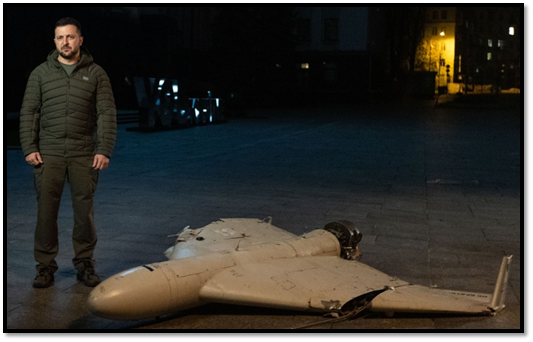
Between August and October 2022, Iran sold Russia hundreds of drones, the Pentagon reported. The aircraft, which are cheaper than missiles, filled a gap in Russia’s arsenal. One Shahed-136 reportedly costs $20,000, a small fraction of the $1 million price-tag of a Russian Kalibre cruise missile. Russia ordered some 2,000 Shahed-136 drones from Iran, Ukrainian President Volodymyr Zelenskyy claimed on October 24. Russia is “in pretty dire straits now, certainly more desperate for partners” if it turned to Iran for arms, State Department Spokesperson Ned Price said on November 1.
Russia fired Shahed-136s on Ukrainian military positions as well as residential buildings, power stations, bridges, playgrounds, sewage treatment plants and other infrastructure, killing civilians. Ukrainian forces downed 70 percent of Iranian drones, Kyrylo Budanov, the head of intelligence at Ukraine’s Defense Ministry, said on October 24. Ukraine claimed to have downed more than 300 Shahed-136s as of late October.
On May 9, 2023 the United States revealed that Iran was supporting Russian efforts to build a drone factory hundreds of miles east of Moscow. The factory could start producing drones in 2024, according to John Kirby of the National Security Council. Tehran was reportedly providing materials for the facility, which would enable Russia to manufacture its own drone supply rather than importing drones from Iran via the Caspian Sea. The Islamic Republic sought fighter jets, attack helicopters, air defense systems, military radars, and other equipment, worth “billions of dollars,” from Russia, Kirby said. “This is a full-scale defense partnership that is harmful to Ukraine, to Iran’s neighbors and to the international community.”
Venezuela: In 2007, Iran agreed to sell Venezuela assembly kits for Mohajer-2 surveillance drones, which have a range of 50 kilometers (31 miles) and are used for surveillance. By 2012, military engineers, trained in Iran, produced three drones. “We are continuing to make them... not just for military use,” President Hugo Chavez announced. The Venezuelan version of the Mohajer-2, renamed the Arpia-001, had only cameras but no weaponry and were for defensive purposes, Chavez said. “We don’t have any plans to harm anyone.” By 2013, the air force reportedly had about a dozen Mohajer-2s to surveil drug traffickers, patrol the border, and protect oil fields.
By 2021, Iran reportedly sold Venezuela the more advanced Mohajer-6, which has a longer range and greater payload than the Mohajer-2. It also provided precision-guided munitions for the Mohajer-6 and other drones in 2022, Israel alleged. At a military parade in Caracas, Venezuela also displayed a new version of the Mohajer-2 renamed the Antonio José de Sucre-100. The aircraft, assembled locally and upgraded with new armaments, were designed to conduct reconnaissance, surveillance and attack missions.
A military parade in Venezuela yesterday exhibited Iranian drones. The announcer describes the capabilities of the drones which include reconnaissance, attack, anti-tank and anti-personnel. pic.twitter.com/I8E87PJAQC
— Joe Truzman (@JoeTruzman) July 6, 2022
Sudan: Iran has reportedly provided a limited number of reconnaissance drones to Sudan since 2008. U.N. peacekeepers observed the Ababil-3, renamed the Zagil, which has a range of 100 kilometers (62 miles). Sudan used the aircraft to surveil rebel groups and pinpoint targets for air force bombers. Rebel groups reportedly downed one Ababil-3 in 2012 and another in 2014.
In early 2024, international media reported and satellite imagery indicated that Iran had shipped an unspecified number of Mohajer-6 drones to the Sudanese Armed Forces (SAF). Later, the rival Rapid Support Forces posted images on social media that confirmed SAF use of the drones.
In October 2024, a U.S. State Department-funded tracking group confirmed that seven flights had flown between Iran and Sudan from December 2023 to July 2024, and that they likely carried military cargo such as drones for the SAF. The flights coincided with an increase in Iranian-made weapons found on the battlefield such as Mohajer-6 drones and other Iranian munitions and artillery.
Ethiopia: Iran provided two Mohajer-6 attack and surveillance drones in August 2021. Ethiopia reportedly used them against Tigrayan rebels. The U.S. Treasury cited the transfer in October 2021, when it imposed sanctions on an Iranian network – including two IRGC generals, two businessmen, and two defense firms – for supporting Iran’s drone programs. The Qods Force “has used and proliferated lethal UAVs for use by Iran-supported groups… and to Ethiopia, where the escalating crisis threatens to destabilize the broader region,” the Treasury said in a statement.
New @planet imagery from December 28, 2021 now confirms the presence of Iranian-made Mohajer-6 drones at Asosa airport in #Ethiopia. The image shows both a drone with the measurement of the Mohajer-6 (wingspan: 10m, length 5.6m) and its ground control station on the tarmac pic.twitter.com/Ewbkkyc759
— Wim Zwijnenburg (@wammezz) January 28, 2022
Tajikistan: In May 2022, Iran opened a facility for manufacturing the Ababil-2 drone, which has a range of 200 km (124 miles) and can conduct reconnaissance, surveillance and attack missions. “Apart from meeting our domestic need, we can export military equipment to allied and friendly countries to help increase security and sustainable peace,” Major General Mohammad Bagheri, the chief of staff of Iran’s armed forces, said at the opening in Dushanbe. Iranian media described the facility as a “factory” or “production plant,” but Nadimi said that it appeared to be a “small workshop-level operation.”
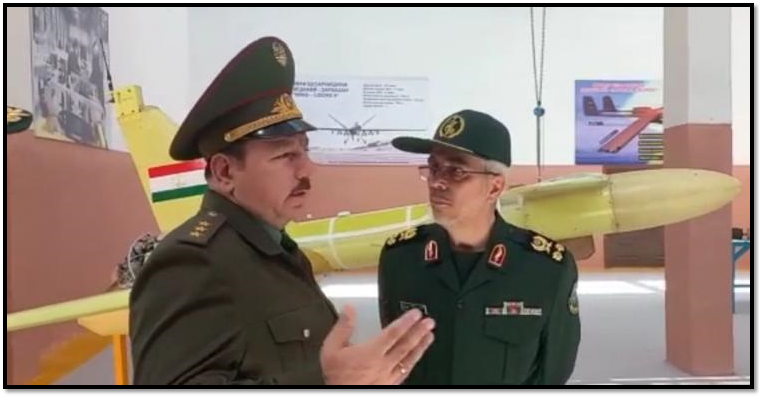
Syria: During the civil war in Syria, Iranian forces reportedly used several types of attack and reconnaissance drones, including the Ababil-3, Mohajer-4, Shahed-123, Shahed-129s, and Yasir. “Our bomber drones have carried out 700 military operations using smart bombs against Daesh [ISIS]” in Syria, Brigadier General Amir Ali Hajizadeh, the commander of the IRGC aerospace force, said in 2018. Iran housed many of its drones at Syria’s Tiya (T-4) airbase, which Israeli forces reportedly hit at least six times between 2018 and 2021. “Since at least 2021, Iran has set up a very small number drone factories in Syria, probably no more than three,” Michael Knights, a fellow at The Washington Institute, told The Iran Primer. A couple of assembly workshops would suffice for the number of drones the IRGC has flown in Syria, he added. In October 2022, Israel reportedly struck an Iranian drone factory operated by Hezbollah in Syria.
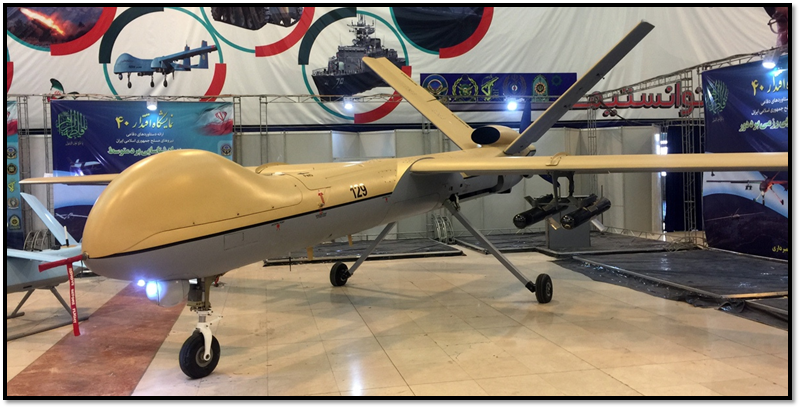
Export Benefits
By exporting drones, Iran garnered “financial gain, prestige and geopolitical considerations” pivotal to its international standing, Nadimi said. Trade in arms was a way to boost bilateral ties for a country with few true allies. “In monetary terms, the deals have been relatively inconsequential, but not so as far as influence goes,” Barrie said.
Iran also benefitted from observing how its drones performed in diverse war zones. “Uninhabited aerial vehicles have an obvious utility in a conflict, but this is in part dependent on how they are used, and how many are available,” Barrie said.
Competition
In 2022, Israel and Turkey were the region’s other major drone exporters. Iran’s drones were simpler and “almost certainly less costly,” Barrie said.
Between 1985 and 2014, Israel exported 60 percent of the world’s drones, according to the Stockholm International Peace Research Institute. It had more than 50 customers in Africa, Asia, Europe, North America, and South America. Israel exported advanced drones for reconnaissance and surveillance that could be later fitted with weapons for attack missions.
After years of importing U.S. and Israeli drones, Turkey developed advanced indigenous systems, such as the Bayraktar TB2, in the 2010s. It can carry out reconnaissance and surveillance missions but also unleash missiles and bombs. In 2022, Ukraine used Turkey’s TB2s to take out Russian artillery systems and armored vehicles, including tanks. As of 2022, at least 14 countries reportedly owned TB2s, and another 16 countries sought to buy them.

